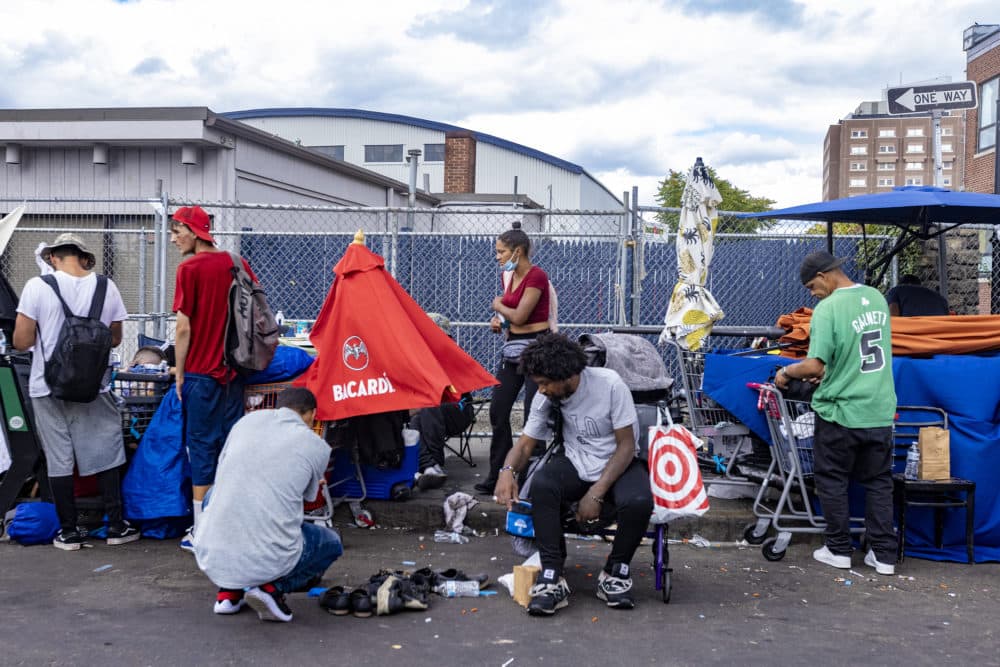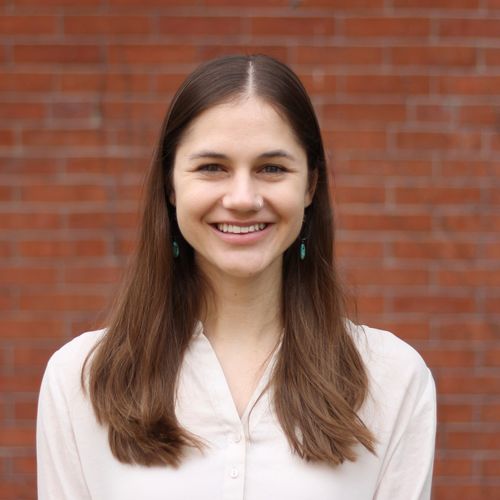From Streets to Stats: Findings from Boston’s Landmark Homeless Health Survey.

Jesse Costa/WBUR
From Streets to Stats: Findings from Boston’s Landmark Homeless Health Survey
A new report details the results of a unique community-engaged research project conducted by the Boston Public Health Commission in collaboration with SPH last summer.
Every September 1, moving trucks line the streets and furniture crowds the sidewalks as tens of thousands of new and returning students and renters make their homes throughout Boston. Meanwhile, for the thousands of Bostonians struggling with homelessness, September 1 is just another day in the city’s shadows.
However, a new report aims to shed light on the unique challenges faced by this historically disenfranchised population, which according to the city’s annual census has grown by nearly 17 percent since last year.
The report, titled “Unhoused and Uncounted: Highlights from the Boston Behavioral Risk Factor Surveillance System Survey Among Unhoused Bostonians,” details the findings of a novel, community-engaged research project conducted by the Boston Public Health Commission (BPHC) in collaboration with the School of Public Health last summer.
With funding from an SPH Practice Innovation Award and the help of five SPH practicum students, a BPHC team surveyed 300 unhoused individuals in less than six weeks, collecting never-before-seen statistics on the health of Boston’s most vulnerable residents.
We, ‘The School of Do,’ understand that being proximal to people and their pain allows us to see, feel, and understand more clearly and thus enables our field to find the way to positive change.
“Without the long-standing partnership with Boston University School of Public Health and our collective work on understanding the relationship between health and housing, this report would not have been possible,” says Gerry Thomas, director of BPHC’s Homeless Services Bureau and the SPH’s students’ practicum supervisor.
Survey administrators Juliana Blodgett (SPH’24), Jiayue Chen (SPH’23), Megan Jones (SPH’23), Julia Kane (SPH’23), and Lindsey Stevens (SPH’23) recruited and interviewed people experiencing homelessness (PEH) at BPHC shelters and a low-threshold day center located just a few minutes’ walk from the SPH campus. The facilities straddle the intersection of Massachusetts Avenue and Melnea Cass Boulevard, an area better known as “Mass and Cass” and the epicenter of the city’s homelessness and substance use crises.
Speaking to the situation in a recent message to the SPH community, Craig Andrade, associate dean for practice and director of the Activist Lab, wrote, “BUSPH is at the right address. Challenging issues such as the persistent Mass and Cass dynamic are why we, as a school of public health, are located on Albany Street. From the beginning, we chose to be in the world. We, “The School of Do,” understand that being proximal to people and their pain allows us to see, feel, and understand more clearly and thus enables our field to find the way to positive change.” He also noted that an upcoming discussion, facilitated by the Activist Lab for interested students, faculty, and staff, will address SPH’s relationship with the neighborhood in greater depth.
Participants recruited to participate in the BPHC and SPH’s study were administered a modified version of the Boston Behavioral Risk Factor Surveillance System Survey (BBRFSS) containing questions about health, access to services, and other lived experiences, such as discrimination, sexual assault, violence, and childhood trauma. Although the survey has been used since 1999 to inform a biennial “Health of Boston” report, its reliance on an active landline or cellphone for administration suggests past samples likely lacked representation from PEH. By centering PEH, the new survey and report expand the continuum of surveillance data available to residents, activists, health professionals, and policymakers on the state of health in the city. As the report’s foreword reads, “We hope you find the information presented here useful in your own efforts to educate, inspire, advocate, and intervene in the interest of optimal health for all Boston residents.”
The findings of the survey reveal nearly three-quarters of PEH have not had stable housing for one year or more and another nearly 20 percent have been without stable housing for a decade of more. Yet, 96 percent would accept subsidized housing, were it offered. Compared to housed Boston residents, the unhoused individuals surveyed reported higher rates of being in poor or fair general health, tobacco use, tooth decay, and poor sleep. This is consistent with prior research demonstrating negative health outcomes associated with homelessness.
Blodgett and Kane, who assisted BPHC with analysis of the survey data, have their own forthcoming report specifically focused on the health of PEH who have a history of incarceration. This group is overrepresented in the population of PEH, with 59 percent of unhoused adults having served time compared to just 3 percent of housed adults. The survey showed the population of PEH is also disproportionately BIPOC and disabled. One of the key objectives of the survey was to gather data on subpopulations like these to work towards addressing health inequities.
“This project was a great example of how a school of public health and a public health agency can work together to address shared goals of improving population health,” says Daniel Brooks, associate professor of epidemiology and one of the project’s principal investigators.
“I am incredibly proud of the SPH students who were the backbone of the project: their commitment, collaboration both with each other and with the Commission, and the skills they demonstrated during all phases of the project,” Brooks says. “In all, this project was a win-win-win: the students were able to complete their practicum doing very meaningful work, BPHC was able to complete the project, and—hopefully—those who are unhoused will benefit from new policies and services, which was the whole point of this effort.”
Last fall, SPH published a reflection Jones wrote (linked below) about her practicum experience surveying PEH alongside her peers. After graduating the MPH program in January 2023, she joined the Office of Marketing and Communications at SPH as the writer/editor for school news.

Comments & Discussion
Boston University moderates comments to facilitate an informed, substantive, civil conversation. Abusive, profane, self-promotional, misleading, incoherent or off-topic comments will be rejected. Moderators are staffed during regular business hours (EST) and can only accept comments written in English. Statistics or facts must include a citation or a link to the citation.